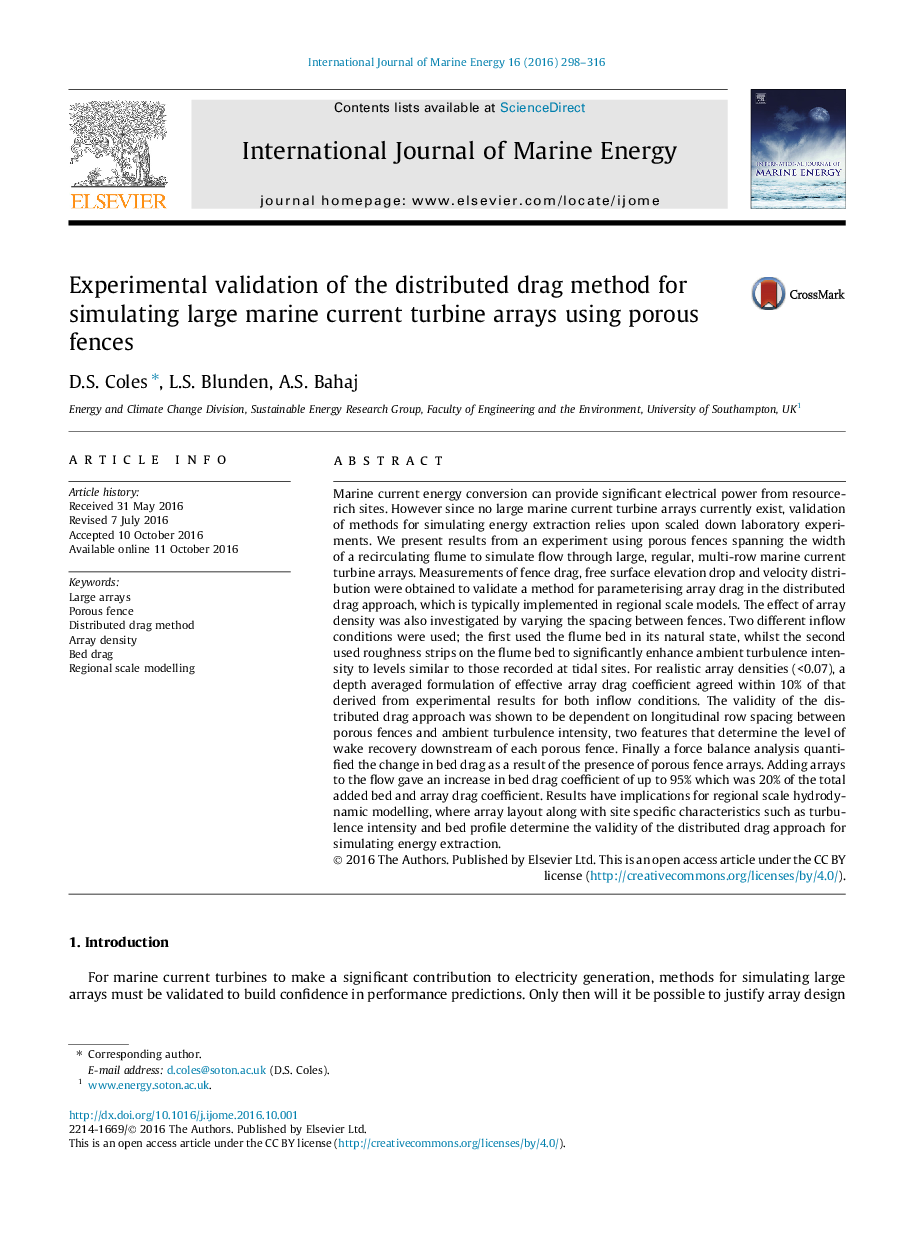| کد مقاله | کد نشریه | سال انتشار | مقاله انگلیسی | نسخه تمام متن |
|---|---|---|---|---|
| 8060210 | 1520419 | 2016 | 19 صفحه PDF | دانلود رایگان |
عنوان انگلیسی مقاله ISI
Experimental validation of the distributed drag method for simulating large marine current turbine arrays using porous fences
ترجمه فارسی عنوان
اعتبار تجربی روش کشش توزیع شده برای شبیه سازی آرایه های توربین های جاری بزرگ با استفاده از نرده های متخلخل
دانلود مقاله + سفارش ترجمه
دانلود مقاله ISI انگلیسی
رایگان برای ایرانیان
کلمات کلیدی
آرایه های بزرگ، حصیری متخلخل، روش کشیدن توزیع، تراکم آرایه، کشیدن تخت، مدل سازی منطقه ای،
موضوعات مرتبط
مهندسی و علوم پایه
مهندسی انرژی
مهندسی انرژی و فناوری های برق
چکیده انگلیسی
Marine current energy conversion can provide significant electrical power from resource-rich sites. However since no large marine current turbine arrays currently exist, validation of methods for simulating energy extraction relies upon scaled down laboratory experiments. We present results from an experiment using porous fences spanning the width of a recirculating flume to simulate flow through large, regular, multi-row marine current turbine arrays. Measurements of fence drag, free surface elevation drop and velocity distribution were obtained to validate a method for parameterising array drag in the distributed drag approach, which is typically implemented in regional scale models. The effect of array density was also investigated by varying the spacing between fences. Two different inflow conditions were used; the first used the flume bed in its natural state, whilst the second used roughness strips on the flume bed to significantly enhance ambient turbulence intensity to levels similar to those recorded at tidal sites. For realistic array densities (<0.07), a depth averaged formulation of effective array drag coefficient agreed within 10% of that derived from experimental results for both inflow conditions. The validity of the distributed drag approach was shown to be dependent on longitudinal row spacing between porous fences and ambient turbulence intensity, two features that determine the level of wake recovery downstream of each porous fence. Finally a force balance analysis quantified the change in bed drag as a result of the presence of porous fence arrays. Adding arrays to the flow gave an increase in bed drag coefficient of up to 95% which was 20% of the total added bed and array drag coefficient. Results have implications for regional scale hydrodynamic modelling, where array layout along with site specific characteristics such as turbulence intensity and bed profile determine the validity of the distributed drag approach for simulating energy extraction.
ناشر
Database: Elsevier - ScienceDirect (ساینس دایرکت)
Journal: International Journal of Marine Energy - Volume 16, December 2016, Pages 298-316
Journal: International Journal of Marine Energy - Volume 16, December 2016, Pages 298-316
نویسندگان
D.S. Coles, L.S. Blunden, A.S. Bahaj,
